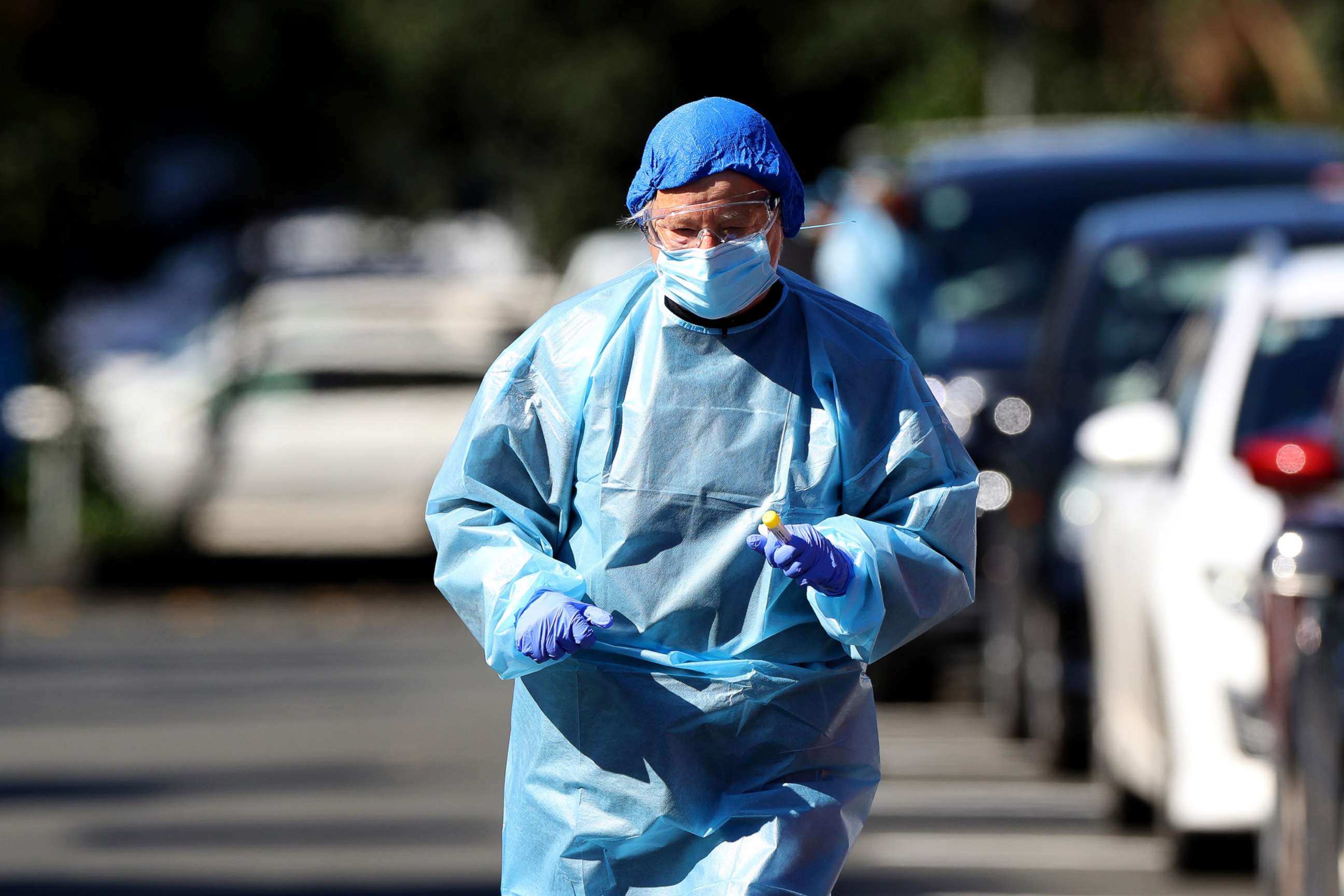New Zealand’s renewed COVID crisis: Why scientists say the virus is hard to contain
A grim reminder of how much is still unknown about the virus
New Zealand -- once the world's COVID recovery darling, applauded internationally for its lockdown and apparent quashing of the pandemic coronavirus -- is now facing a fresh cluster of cases.
After the country's recent celebration of 100 days without any documented coronavirus cases, scientists say New Zealand's latest COVID-19 resurgence is shedding new light on how the virus is spread and why it's so hard to contain.
"With a novel virus like this, you have lots to learn," says Dr. David Grenache, president of the American Association for Clinical Chemistry.
With tight restrictions on who can enter the country and mandatory quarantining and testing of recent travelers, New Zealand's public health officials were initially puzzled when the current outbreak in Auckland began last week. Even amid this current outbreak, the country only has about 90 active cases -- compared to more than 40,000 new cases reported in the U.S. on a single day.
Even so, experts interviewed by ABC News say that New Zealand's recent outbreak demonstrates why this virus is so hard to contain.
While the cause of the outbreak is still being investigated, experts say it's possible the virus has been there all along.
"Just because there are no reported cases, that doesn't mean there aren't any," said Dr. Dan Barouch, director of the Center for Virology and Vaccine Research at the Beth Israel Deaconess Medical Center in Boston. "There could be asymptomatic cases existing and spreading without any actually being detected."

Dr. John Lednicky, a research professor at the University of Florida – Gainesville who studies respiratory viruses, including the virus responsible for COVID-19, calls this phenomenon "smoldering transmission."
Essentially, he proposes that the virus may have been spreading in low levels all along in pockets of New Zealand. Of the few people in the country who were infected, they likely had no symptoms and thus never thought to get tested. Without even knowing it, they may have had COVID-19 and infected their close contacts.
Then, after 102 days of this undetected, smoldering transmission, one infected person became symptomatic, and was found to have the coronavirus. Lednicky thinks this is the most likely explanation for the current outbreak in New Zealand.
But others say smoldering transmission is unlikely. "The wide testing being done shows the virus hasn't secretly been hanging around in New Zealand for the last few months," claimed Dr. Siouxsie Wiles, a microbiologist at the University of Auckland. To her, the origins of the new outbreak are "still a bit of a mystery."
Health authorities have said the most likely scenario is that the virus hitched a ride with a traveler from overseas. Despite strict controls and mandatory quarantines at the border, it is possible someone with COVID-19 entered the country. But so far, they haven't found the likely source.
No matter the reason, the fact that COVID-19 sprung up in New Zealand again demonstrates the virus's tenacity. Even with a weekslong lockdown, mandatory quarantine guidelines, social distancing, and attempts at establishing a "mask culture" in the island nation, the coronavirus still managed to re-outbreak.
This reality serves as a grim reminder of how much is still unknown about the virus and how it is spread. Early concerns centered on the virus's ability to infect those who came into contact with contaminated surfaces. Gloves in grocery stores and the fastidious wiping down of food items brought home became widespread.
Now, according to Dr. Ben Singer, physician-scientist in pulmonary and critical care medicine at the Northwestern University Feinberg School of Medicine, "Current evidence shows that this represents a very minor mode of transmission, if at all." Instead, he says, virus-carrying droplets that fly out of our mouths and linger in the air or land on others seems to be the major mode of transmission.
But even this conversation -- one of exactly how the virus itself is spread -- is still hotly contested nearly nine months after COVID-19 first emerged in China in December of last year.
Some experts are quick to acknowledge these gaps in understanding.
"We aren't 100% knowledgeable about all the modes of transmission," said Dr. Todd B. Ellerin, an infectious disease specialist at South Shore Health in Massachusetts.
Despite this cloudy reality, however, his and other experts' recommendations remain clear: "The COVID infection prevention bundle of hand-washing, social distancing, and mask-wearing still stands," Ellerin said.
Nate Wood, M.D., is an internal medicine/primary care resident at Yale New Haven Hospital and a contributor to the ABC News Medical Unit. Molly Stout, M.D., Jonathan Chan, M.D., Britt Clennett, and Sasha Pezenik contributed to this article.



